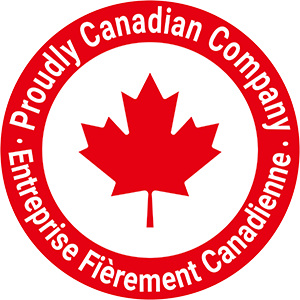How to Decide Who to Layoff?
By Adrienne Reilly |
13.3 min read
How to Decide Who to Layoff? A Strategic Guide Powered by The Predictive Index
In uncertain economic climates, tough decisions often become necessary for business continuity. One of the most challenging decisions any organization faces is laying off employees. Leaders grapple with the emotional, cultural, and operational fallout that follows workforce reduction. A key question many executives and HR professionals ask is: how do companies decide who to layoff, and who gets laid off first?
In this comprehensive guide, we’ll explore ethical, strategic, and data-driven ways to make layoff decisions. Most importantly, we’ll explore how tools like The Predictive Index, delivered by Predictive Success, can provide clarity and fairness during this critical process.
Table of Contents
- Introduction: The Emotional Weight of Layoffs
- Why Layoffs Happen: The Business Context
- The Core Question: How Do Companies Decide Who to Layoff?
- Traditional Methods vs. Strategic Workforce Optimization
- The Predictive Index Approach
- Using Behavioral Data to Guide Layoff Decisions
- Job Fit and Role Redundancy
- Evaluating Team Structure and Productivity Risk
- Who Gets Laid Off First? Unpacking the Factors
- Ethical Considerations and Legal Compliance
- Communication: Managing the Human Side
- Case Study: Strategic Layoffs with Predictive Success
- Alternatives to Layoffs
- Rebuilding After a Layoff
- Conclusion: Making Difficult Decisions with Integrity
- Introduction: The Emotional Weight of Layoffs Layoffs are never easy. Even when financially necessary, they carry a heavy burden — morale drops, trust in leadership is tested, and the corporate culture may suffer. That’s why determining who gets laid off first must go beyond gut instinct, seniority, or cost-cutting alone.
Many companies approach this with reactive thinking. However, proactive organizations use people data and talent optimization strategies — like The Predictive Index — to make intentional, aligned decisions.
Layoffs are more than a numbers game. They impact families, disrupt lives, and have a long-term ripple effect on brand reputation and internal culture. Therefore, decisions must be made with compassion, backed by data, and communicated transparently.
- Why Layoffs Happen: The Business Context Organizations may reduce headcount for several reasons:
- Declining revenue
- Mergers or acquisitions
- Shifts in market demand
- Technological disruption
- Restructuring or right-sizing
- Ending of temporary projects or contracts
Whatever the reason, leadership must clearly define the “why” before tackling the “who.” The rationale for layoffs needs to be clearly documented and aligned with business strategy. For example, are layoffs intended to reduce costs, pivot to a new business model, or eliminate duplicate functions after a merger?
Understanding the underlying purpose helps guide more strategic decisions and minimizes confusion among employees.
- The Core Question: How Do Companies Decide Who to Layoff? This is the pivotal issue: how do companies decide who to layoff in a way that is fair, defensible, and strategic?
Traditionally, decisions are made based on:
- Seniority (“last in, first out”)
- Salary cost
- Performance evaluations
- Department elimination
- Skill redundancy
But each of these has its limitations. For example, laying off high-cost employees might leave critical skill gaps. Letting go of low performers may not be relevant if their roles are still needed. Without a strategic framework, companies risk losing key players and worsening internal imbalances.
Moreover, traditional methods often fail to consider long-term business goals, individual potential, or cultural fit.
- Traditional Methods vs. Strategic Workforce Optimization Old models of layoffs are transactional. They solve short-term problems but often create long-term damage.
Strategic workforce optimization shifts the conversation. It asks:
- What talent do we need to keep our competitive edge?
- Which roles are most aligned with our business priorities?
- Where do we have overlap or inefficiency?
- Who has the adaptability to help us navigate change?
This approach demands insight — not assumptions. That’s where behavioral analytics and talent optimization come in. Using people data to inform decisions allows organizations to preserve top talent and reorganize with purpose.
- The Predictive Index Approach The Predictive Index (PI) is a powerful talent optimization platform that helps organizations understand their people scientifically. Delivered by Predictive Success in Canada, PI uses behavioral and cognitive data to guide key people decisions — including layoffs.
Key tools within The Predictive Index:
- Behavioral Assessment (BA): Reveals natural drives and motivational needs
- Cognitive Assessment (CA): Measures learning agility and problem-solving speed
- Job Targeting: Aligns behavioral traits with the demands of a role
- Team Work Styles & Relationship Maps: Evaluates how well teams function under stress
During layoffs, PI can help answer:
- Who is best aligned with the remaining strategic roles?
- Who has the behavioral adaptability to transition or grow into new roles?
- Which team structures offer the best chance of stability and recovery?
These insights ensure that layoff decisions are aligned with future needs, not just past performance.
- Using Behavioral Data to Guide Layoff Decisions Imagine a company reducing its product development team. The Predictive Index can highlight which individuals are naturally wired for innovation, precision, and independent work — valuable traits for a smaller, more agile team.
Rather than defaulting to seniority, leaders can ask:
- Does this person’s behavioral profile match the future job design?
- Will this person thrive in a high-autonomy or high-collaboration role?
- Are they able to flex outside their comfort zone?
This approach shifts layoffs from subjective to strategic. It allows companies to retain high-potential individuals who may not be the most vocal but are foundational to future success.
- Job Fit and Role Redundancy Another core question is: how well does each individual fit their current or future role? The PI Job Targeting tool helps match individuals to roles based on behavioral and cognitive compatibility.
Let’s say two employees have similar tenure and performance, but only one aligns with the future vision of the role. The person with a better job fit is more likely to succeed, reducing the risk of poor morale or burnout post-layoff.
Organizations can also use PI to analyze where there is redundancy in roles. If multiple team members have overlapping behavioral profiles and job functions, it may indicate inefficiency or opportunity for consolidation.
- Evaluating Team Structure and Productivity Risk Layoffs don’t just impact individuals — they reshape teams.
The PI Team Discovery tool can help assess:
- Team strengths and gaps
- Behavioral diversity and blind spots
- Leadership-to-team alignment
- Overall team cohesion under stress
By simulating post-layoff scenarios, leaders can identify whether removing certain individuals will lead to instability or whether the remaining team can compensate for the loss.
This prevents unintended ripple effects, like team dysfunction or leadership voids.
- Who Gets Laid Off First? Unpacking the Factors So, who gets laid off first?
The answer lies at the intersection of business strategy and people data. Some key considerations include:
- Role necessity: Is this role essential for current or future strategy?
- Behavioral fit: Does this individual’s profile align with what the role demands?
- Team dynamics: Would their departure destabilize a high-performing team?
- Adaptability: Can this person flex into a new or redefined role?
- Performance: Are they consistently adding value?
- Compliance: Are you avoiding any protected classes or legal risks?
This multifactor approach minimizes bias and maximizes organizational health.
- Ethical Considerations and Legal Compliance Every layoff decision must meet both ethical and legal standards. Discrimination, favoritism, or retaliation can expose a company to lawsuits and reputational damage.
Predictive Index data is EEOC-compliant and non-discriminatory, making it a valuable piece of documentation to demonstrate objective decision-making.
Combining this with diversity and inclusion awareness helps companies avoid unconscious bias and promote fairness during an emotionally charged process.
- Communication: Managing the Human Side Once decisions are made, communication becomes the next minefield.
Best practices:
- Be clear and direct — don’t sugar-coat
- Offer rationale that ties back to business needs
- Show empathy and appreciation for contributions
- Offer outplacement or transition support
- Keep remaining staff informed and motivated
When people understand the “why,” they are more likely to accept the “what.” And when decisions are made using an evidence-based tool like PI, trust in leadership remains higher.
- Case Study: Strategic Layoffs with Predictive Success Let’s consider a mid-sized Canadian software company working with Predictive Success. Faced with revenue contraction, they needed to reduce their headcount by 15%.
Instead of across-the-board cuts, they used The Predictive Index to:
- Identify roles with the lowest strategic impact
- Map future job needs to behavioral requirements
- Evaluate cognitive agility for re-training options
- Analyze team dynamics to minimize disruption
The result?
- 30% fewer regrettable losses compared to their last layoff
- A smoother recovery curve
- Higher engagement among remaining staff
Leadership credited PI with helping them make humane, fair, and effective decisions under pressure.
- Alternatives to Layoffs Before laying off staff, explore alternatives:
- Role reallocation
- Reduced hours or job sharing
- Voluntary exits or early retirement
- Redeployment or upskilling
- Temporary salary reductions
- Leave of absence programs
The Predictive Index can help identify which employees might thrive in redefined roles or take on stretch assignments, avoiding layoffs altogether.
- Rebuilding After a Layoff The layoff process doesn’t end when the last package is delivered. Recovery is equally important.
Post-layoff, use The Predictive Index to:
- Reassess team cohesion
- Identify leadership development needs
- Build resilience and engagement
- Guide new hires for future growth
Predictive Success works with companies long after the hard decisions are made — helping them rebuild stronger, smarter, and with intention.
- Conclusion: Making Difficult Decisions with Integrity Layoffs will never be painless. But they can be handled with thoughtfulness, objectivity, and fairness. Leaders who ask, “how do companies decide who to layoff?” must look beyond instinct or seniority. They need tools that provide data, insight, and humanity. Real-Life Examples of Layoff Decisions
- Example 1: Manufacturing Firm Pivoting to Automation
A large manufacturing company in Ontario was pivoting toward automation. With a new strategic direction, the company needed fewer machine operators and more technicians with higher problem-solving skills. By using PI’s Cognitive Assessment, they discovered which current employees could be reskilled to meet new technical demands. The result: rather than laying off 100 people, they reassigned and reskilled 45 and laid off 55 with generous transition packages.Example 2: Marketing Agency Rightsizing After Client Loss
A boutique marketing firm lost its three largest clients in a single quarter. Facing financial pressure, they needed to reduce the team by 20%. Traditionally, they would have cut from underperforming departments. Instead, with Predictive Success, they mapped each team member’s Behavioral Assessment against future strategic roles. Those who aligned best with new digital-first services (e.g., SEO, AI marketing) were retained and repositioned.Example 3: Mergers and Redundant Roles
During a merger of two logistics firms, redundant roles were a major issue. The leadership team used Predictive Index’s Job Targeting and Team Discovery tools to decide who should stay. Instead of duplicating roles, they retained team members with complementary work styles, ensuring diversity in approach and minimizing groupthink post-merger.
- Q&A: Common Layoff Questions Answered
Q: What role does performance play in deciding layoffs?
A: Performance is important, but not in isolation. Someone who performs well in a now-obsolete role may not be useful in the future structure. The Predictive Index helps balance performance with future fit and adaptability.
Q: Is it ethical to use behavioral assessments in layoffs?
A: Yes, when used properly. PI assessments are EEOC-compliant and non-discriminatory. They are not used to justify layoffs but to make more informed, future-aligned decisions.
Q: Should companies follow LIFO (last in, first out)?
A: Not necessarily. Tenure alone doesn’t predict future contribution. Many high-impact contributors may be newer hires. PI helps evaluate their potential beyond tenure.
Q: How can we support those being laid off?
A: Offer resume help, reference letters, and outplacement support. Consider using Predictive Index results to guide employees into more aligned future roles elsewhere.
Q: How can remaining staff trust leadership post-layoff?
A: Transparency and communication are key. Explain the process (e.g., use of objective tools like PI) and reinforce a forward-looking strategy.
- Building Strong Teams with The Predictive Index
Beyond its value during layoffs, The Predictive Index is an essential tool for building cohesive, high-performing teams. PI provides deep insights into behavioral drives, communication styles, and team dynamics.
Key Tools That Strengthen Team Formation:
- Team Discovery: Helps leaders understand the behavioral makeup of their teams. It visualizes each team member’s work style and how they interact under pressure. Teams can use this to ensure that responsibilities are distributed in alignment with individual strengths.
- Relationship Guides: These show how two individuals are likely to work together, identifying potential friction points and communication gaps.
- Strategy Alignment: The PI Design module lets organizations define business strategy and then maps team strengths and gaps against that strategy, identifying whether the current team can execute effectively.
Example in Practice:
A tech start-up was growing rapidly but struggling with project execution. Using The Predictive Index, they realized their leadership team was overly weighted with high-dominance, low-patience profiles — great for innovation but weak in follow-through. By bringing in high-structure, process-driven team members, they created better balance and delivery improved across all projects.
Team Building Case Study: Healthcare Organization Expansion
A national healthcare organization expanding into new regions needed to create cross-functional teams from scratch. Working with Predictive Success, they began by administering Behavioral Assessments to all existing department leads and new hires. Team Discovery was used to ensure diversity in work styles across leadership pods — balancing proactive, fast-paced profiles with stabilizing, detail-oriented contributors.
One challenge was the integration of a newly acquired clinic with a different operating culture. Predictive Index tools revealed misalignments between clinic leadership and corporate operations. With Relationship Guides and a PI-certified consultant, the teams aligned on roles and expectations before conflicts could escalate.
In the following quarter, employee engagement scores improved by 22%, and patient satisfaction metrics rose steadily. Leadership credited the use of PI with helping them proactively engineer successful team dynamics, rather than relying on trial and error.
Why This Matters Post-Layoff:
Following a reduction in force, remaining teams are often expected to do more with less. Team Discovery ensures leaders know how their teams work best — and where they need support. By optimizing team makeup and assigning roles that suit natural behavioral tendencies, organizations can improve morale, reduce burnout, and accelerate recovery.
Beyond its value during layoffs, The Predictive Index is an essential tool for building cohesive, high-performing teams. PI provides deep insights into behavioral drives, communication styles, and team dynamics.
Key Tools That Strengthen Team Formation:
- Team Discovery: Helps leaders understand the behavioral makeup of their teams. It visualizes each team member’s work style and how they interact under pressure. Teams can use this to ensure that responsibilities are distributed in alignment with individual strengths.
- Relationship Guides: These show how two individuals are likely to work together, identifying potential friction points and communication gaps.
- Strategy Alignment: The PI Design module lets organizations define business strategy and then maps team strengths and gaps against that strategy, identifying whether the current team can execute effectively.
Example in Practice:
A tech start-up was growing rapidly but struggling with project execution. Using The Predictive Index, they realized their leadership team was overly weighted with high-dominance, low-patience profiles — great for innovation but weak in follow-through. By bringing in high-structure, process-driven team members, they created better balance and delivery improved across all projects.
Why This Matters Post-Layoff:
Following a reduction in force, remaining teams are often expected to do more with less. Team Discovery ensures leaders know how their teams work best — and where they need support. By optimizing team makeup and assigning roles that suit natural behavioral tendencies, organizations can improve morale, reduce burnout, and accelerate recovery.
- Final Thoughts
Layoffs, while difficult, can also be moments of transformation. By approaching them strategically, ethically, and with the support of data-driven tools like The Predictive Index, organizations can ensure their decisions serve both the business and the people.
As Predictive Success clients have shown, the right tools enable companies to retain key talent, reduce disruption, and rebuild stronger. And when it comes time to grow again, The Predictive Index is just as valuable for building resilient, purpose-driven teams.
Remember: When asking, “how do companies decide who to layoff?” the real answer lies in aligning people strategy with business strategy—backed by insight, empathy, and integrity.
Related Blogs
5 Types of Communication Styles and How to Use Them Effectively
The 5 Communication Styles and How to Use Them Effectively Communication is the foundation of every successful business interaction, whether you are leading a strategic planning session, managing change, coaching a team member, or sharing
Average Typing Speed (WPM): What’s Good, What’s Fast and How to Improve
Average Typing Speed (WPM): What’s Good, What’s Fast, and How to Improve Whether you’re a student, professional, or casual computer user, typing efficiently can save you countless hours each year. But how do you know
Combining The Five Dysfunctions of a Team and The Predictive Index: A Talent Optimization Blueprint
Combining The Five Dysfunctions of a Team and The Predictive Index: A Talent Optimization Blueprint by Predictive Success High-performing teams don’t emerge by accident—they’re designed with intention. Combining The Five Dysfunctions of a Team and



